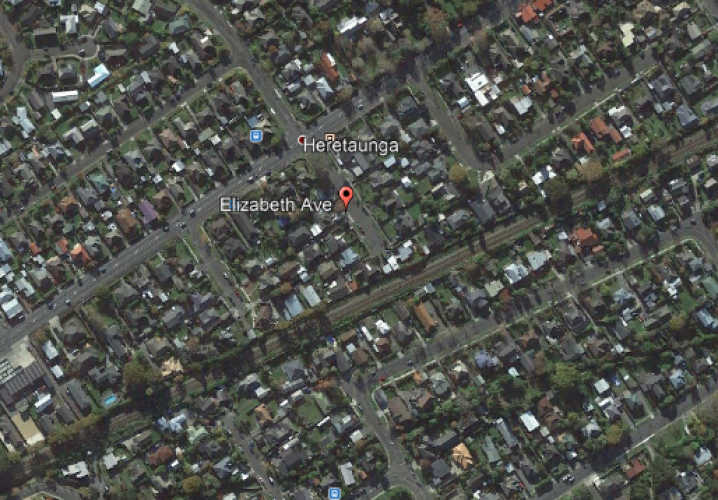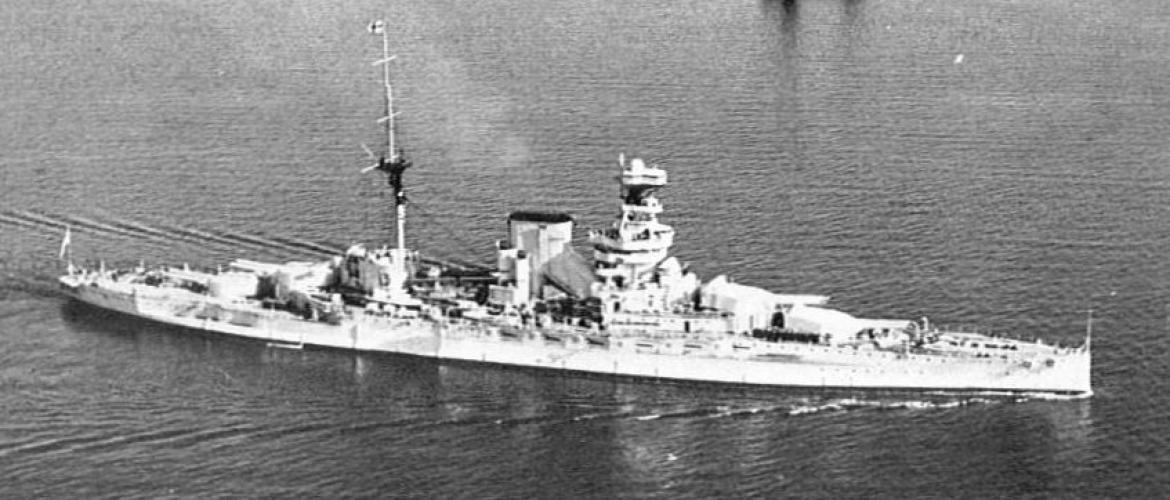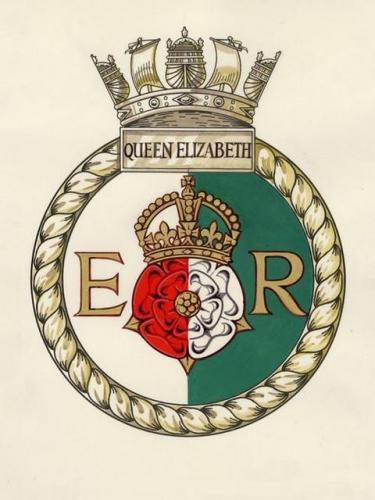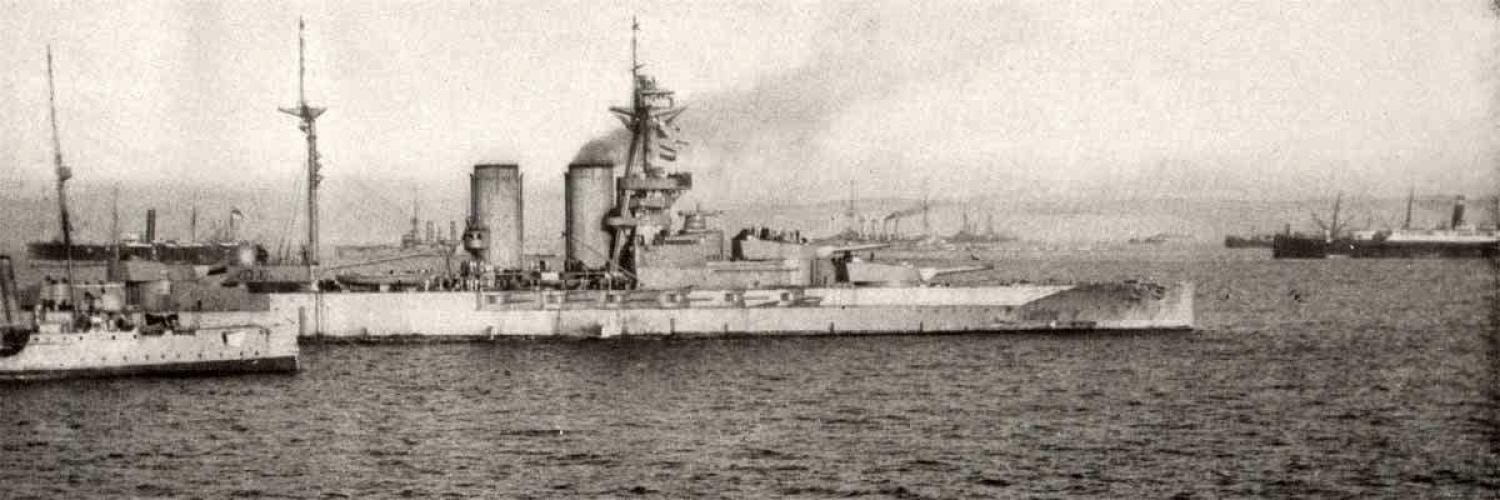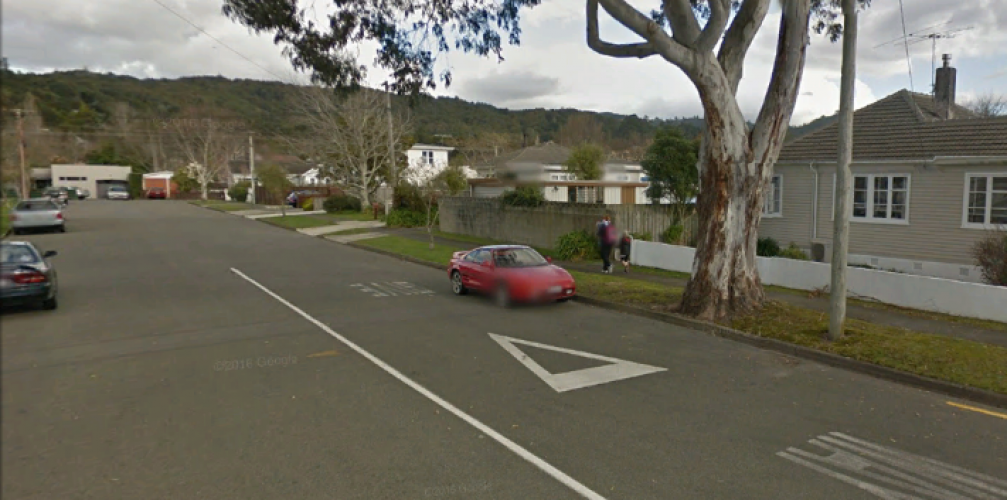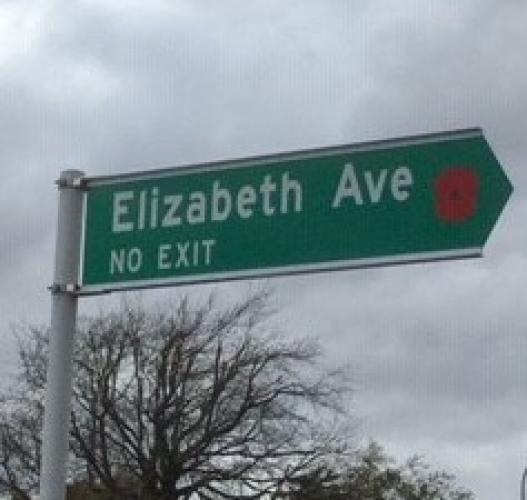200 Elizabeth Avenue Heretaunga Upper Hutt, street scene 2018
Reason for the name
Elizabeth Avenue was named after HMS Queen Elizabeth a battleship that had supported New Zealanders in WW1 and in WW2.
The 1939 Birch-Tree subdivision of Heretaunga recorded Elizabeth, Hood and York streets. HMS Elizabeth, HMS Hood and HMS York were all Royal Navy ships. Elizabeth Avenue was recorded in the Wises NZ Post Office Directory 1955 & 1959 & 1961-1962 volumes.
HMS Queen Elizabeth was directly involved with New Zealanders in the Dardanelles in World War 1 and during the evacuation of Crete in WW2.
The HMS Queen Elizabeth was the lead ship of her class of dreadnought battleships for the Royal Navy in the early 1910s and was often used as a flagship. She served in World War I as part of the Grand Fleet and served in WWII but was scrapped in 1948.
Author: The Poppy Places Trust
Queen Elizabeth, named in honour of Elizabeth I of England, was launched on 16 October 1913 at Portsmouth, Hampshire, and entered service in January 1915 during the First World War. While still undergoing testing in the Mediterranean, the ship was sent to the Dardanelles for the Allied attempt to knock the Ottoman Empire out of the war. She was the only dreadnought battleship to participate, though a number of battlecruisers and pre-dreadnought battleships were also involved. She became the flagship for the preliminary naval operations in the Dardanelles Campaign, leading the first line of British battleships in the battle of 18 March 1915.
O.E. Burton wrote of the Gallipoli preparations at Mudros in Greece;
"But mightier far than any other ship upon the seas of the world, lay the Queen Elizabeth, super dreadnought, the most powerful engine of destruction that the mind of man had yet conceived. Long, low, broad, with clear decks fore and aft her vast size was not at first apparent but as one drew nearer her eight enormous guns seemed to dominate everything else with a suggestion of terrible power. She lay unquestioned 'queen of the strange shipping there.'"
In his diary LIEUTENANT RALPH. D. DOUGHTY MC 1891-1917 H' Battery, New Zealand Field Artillery and thence AIF writes:
“12th April 1915
Arrived at Lemnos. Anchored under torpedo protection at 5.30 pm. Splendid naval base. About 50 or 60 ships here now. Transports and warships passed the Askold, two French Monitors and several English warships, including the Queen whose band received us with 'It's a Long Way to Tip'. A first class battleship name unknown but flying the white ensign passed us a short time after we anchored. Splendid sight. Saw one cruiser, which from outward appearances has been in action. Just got an order 'Enemy's aeroplanes about, douse all lights' so it's bunk with a vengeance tonight.
13th April 1915
Found out that the unknown battleship of yesterday is the Queen Elizabeth, known generally throughout this Division as just plain 'Lizzie'. Believe she is to support us in our first scrap. Been around several of the fleet today with Lt Selmes etc. Brought a luxury in the form of three loaves of bread. Got it pretty rough coming home. Nelsonian days over again. Got wet through, but didn't mind that as it was a welcome change to that infernal sand. Mail came aboard today. Mine 'nonest'. Heard an amusing thing about Lizzie. She leaves here early in the morning and goes up to the Dardanelles tickles the Turks up a bit, and returns here in time for tea.”(1)
During the attempted military invasion of the Gallipoli on 25 April, Queen Elizabeth was the flagship for General Sir Ian Hamilton, commander of the Mediterranean Expeditionary Force..
With her age she was sent for refitting. When her reconstruction was complete in 1941, Queen Elizabeth rejoined the Mediterranean Fleet, covering the evacuation of Crete in June 1941.
Queen Elizabeth went to the Home Fleet in July 1943, and in December 1943 she left for the Eastern Fleet, which she joined in January 1944 (in November 1944 reorganized into the East Indies Fleet). She took part in raids on Japanese bases in the Dutch East Indies, and was placed in reserve in August 1945.
The vessel was paid off in June and scrapped in July 1948.
O.E Burton, The Silent Division, New Zealanders at the Front 1914-1919 p.33
https://commons.wikimedia.org/w/index.php?curid=17906055 (Crest)
By Andy Dingley (scanner) - Scan from Burgess, Malcolm William (1936) Warships To-day, London: Oxford University Press, pp. facing page. 128, Public Domain, https://commons.wikimedia.org/w/index.php?curid=63300970 (Charles Brown)
By Collier's Photographic History of the European War (New York, 1916) available at http://www.firstworldwar.com/photos/graphics/cpe_queen_eliz_01.jpg, Public Domain, https://commons.wikimedia.org/w/index.php?curid=4449704 (original configuration)
- Transcribed diary one - between the dates 5th April 1915 to the 15th September 1915 Public - Peter - Other Relative - 19 March 2015 - Transcribed diaries ‘from and cared for’ by the Kivell Family Diary One - Egypt - Lemnos Island - Gallipoli: April 1915 (thekivellfamily.co.nz)


